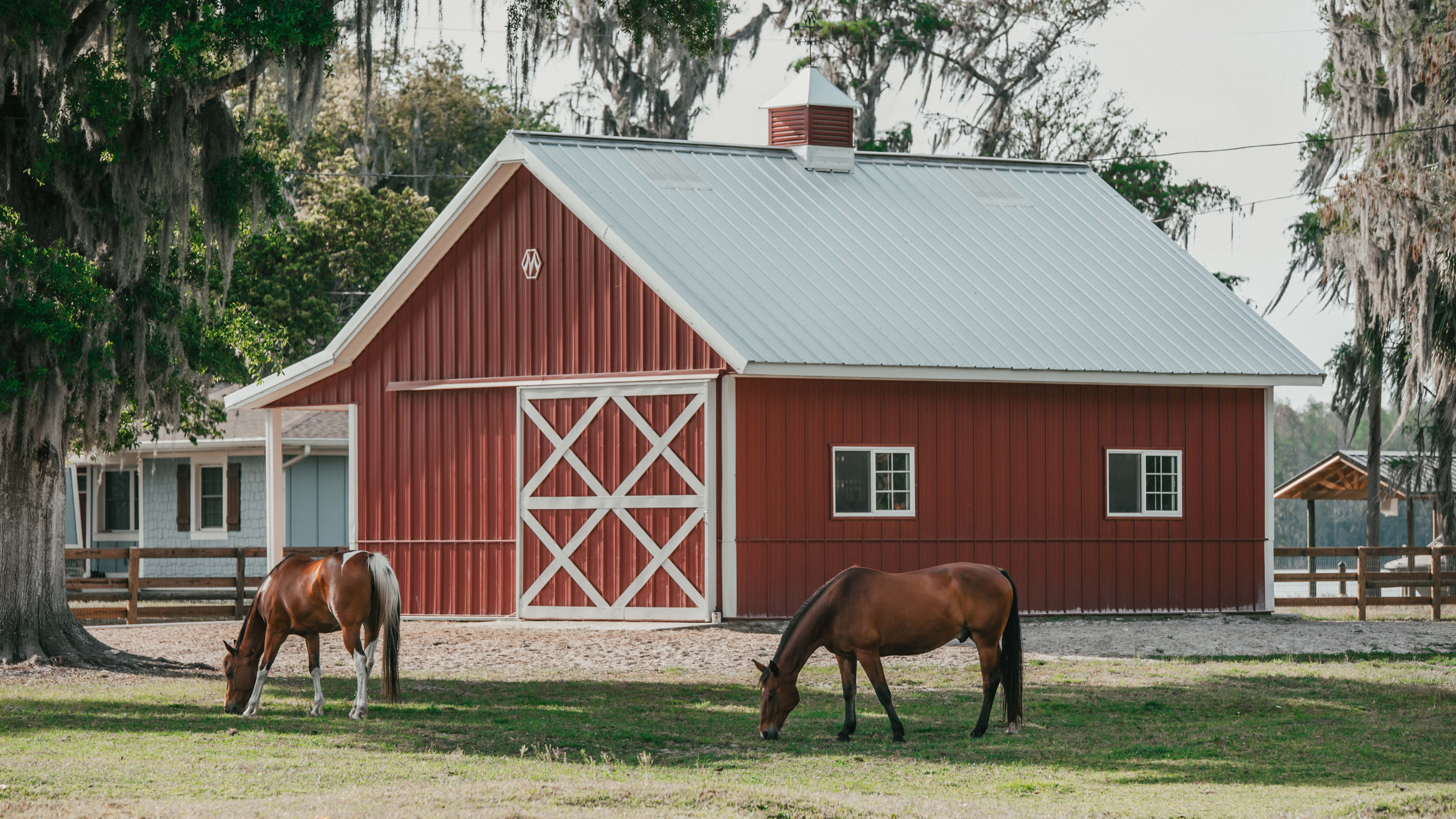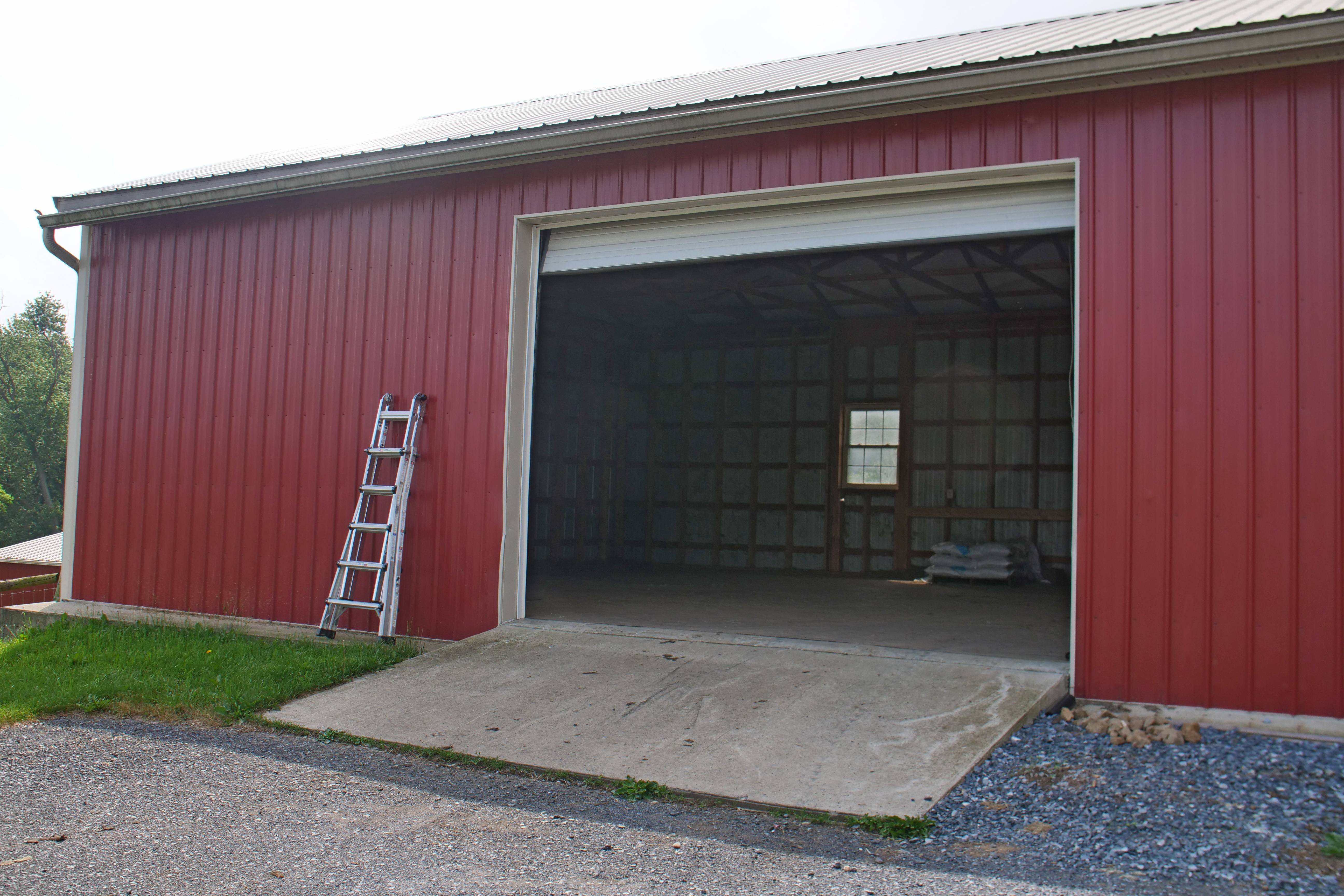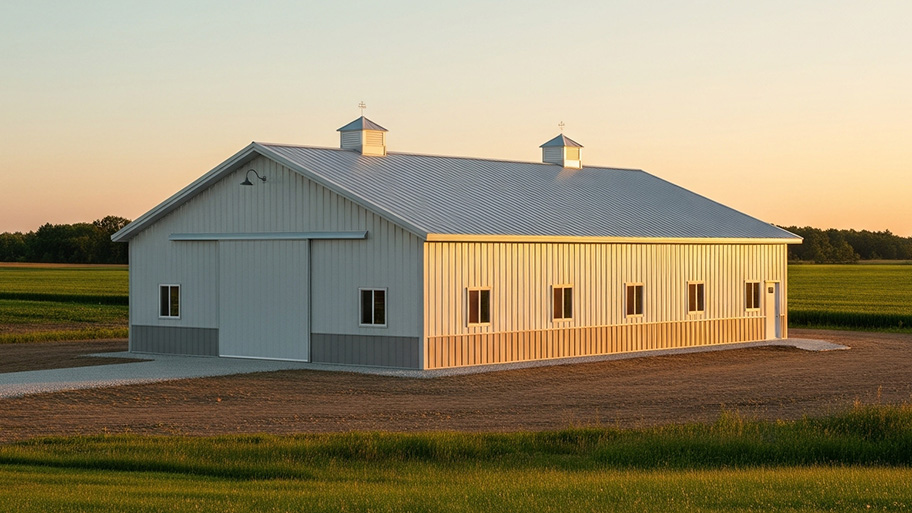
Garages increase curb appeal and have a high ROI. Use this guide to learn about the average cost to build a garage and budget for your project.
Get the most out of this flexible-use structure


Pole barns are easily constructed structures that can be used as garages, workshops, horse barns, or even a home.
The right size pole barn depends on its intended use and your available space.
A local barn builder can help you create and customize your pole barn.
Adding a pole barn to your property can add valuable indoor space with many possible uses. Whether you’re using your pole barn as a garage, workshop, horse barn, or living space, it’s important to have the right size for how you intend to use it. We break down some of the different uses for pole barns, standard sizes, and how to pick the right size for your purposes.
Pole barns are available in a wide range of sizes, from 10-foot by 10-foot sheds to 80-foot by 200-foot horse barns and larger. Pole barn size is primarily dictated by how you intend to use the space and how much space you have available to build on.
The first step in determining your ideal pole barn size is deciding what you’ll use it for. Uses for pole barns include garages, workshops, sheds, horse barns, and barndominiums. Here are some common pole barn uses and sizes:
| Use | Average Size (Ft.) |
|---|---|
| One-car garage | 12-by-22 to 16-by-24 |
| Two-car garage | 18-by-20 to 22-by-22 |
| Three-car garage | 32-by-22 to40-by-30 |
| Small workshop | 12-by-20 to 16-by-24 |
| Medium workshop | 18-by-24 to 30-by-50 |
| Large workshop | 30-by-50 to 80-by-120 |
| Horse barn | 36-by-40 to 80-by-200 |
| Shed | 10-by-10 to 14-by-16 |
| House/barndominium | 30-by-40 to 80-by-100 |
Pole barn garages can range from a 12-by-22-foot one-car garage to a 40-by-30-foot three-car garage or larger. Square footage for pole barn garages can vary, as many homeowners add a second story for storage or even living space.
Pole barn workshops are very common and can be as small as 12 by 20 feet or as large as 80 by 120 feet or more. The size of the workshop you’ll need will depend on the type of work you’ll be using it for, the kind of equipment it’ll house, whether you’re including commercial space, and more.
Horse barns and riding arenas are very popular uses for pole barns. Horse barns that only include stalls and storage can be as small as 36 by 40 feet, while riding arenas can be very large, up to 80 by 200 feet or more.
Pole barn construction can also be used for sheds, which tend to be much smaller than other kinds of pole barns. Standard shed sizes range from 10 by 10 feet to 14 by 16 feet.
One more recent use for pole barns is as living space, often known as a barndominium. If you’re building a barndominium, you may choose from common sizes from 30 by 40 feet all the way to 80 by 100 feet. Because barndominiums often cost less than traditional house construction, many homeowners choose to build bigger spaces, which may include garages, workshops, or other mixed-use space.

When measuring for your pole barn, consider whether you’ll be housing large equipment, farm animals, or anything else that can affect the amount of space you’ll need. Also, remember to factor in clearance for outdoor equipment, an RV, or other items that you’ll be moving in and out of the space.
How you’ll use your pole barn is the primary factor in determining how big it should be, but there are other considerations to consider when deciding on the right pole barn size.
How much space you have to build on will also affect your pole barn's size. While these barns are often used on farms and large plots of land, if your property is on the smaller side, it can limit the size of your pole barn.
In some areas, zoning or building regulations may limit the size or use of outbuildings like pole barns. Always check local codes before beginning construction to ensure compliance.
The cost of a pole barn is often more affordable than the cost to build a barn with other types of construction, so consider building larger than you currently need in order to have extra space for the future. Since pole barns can be used for a wide range of purposes, having additional space available can allow you room to grow without adding or building another barn.
If your pole barn is too small, a local barn builder can help you customize a larger space that meets all your needs and gives you options for your outbuilding use. Before hiring a contractor to build your barn, decide on how you’ll use the space, your budget, and what internal configuration will work best for you, so you can ensure you have the right size pole barn for your needs.
From average costs to expert advice, get all the answers you need to get your job done.

Garages increase curb appeal and have a high ROI. Use this guide to learn about the average cost to build a garage and budget for your project.

Discover the cost to build a pole barn, including average prices, key cost factors, and tips to help you budget and plan your project with confidence.

Building a shed adds storage space, provides protection for equipment, and can add living space. Shed costs depend on the size, materials, and amenities.

If you’ve ever wondered what precisely a pole barn is, you’re about to find out. Not many know the advantages and disadvantages to the cost, construction style, and flexibility of building one on your own or hiring a contractor for the job.

Ever wondered: How much does a garage add to home value? This addition can raise your home’s value significantly, providing convenience and storage. Here’s why adding a garage is worth it.

Here’s a handy list of questions about building a garage you’ll need to answer for potential pros.